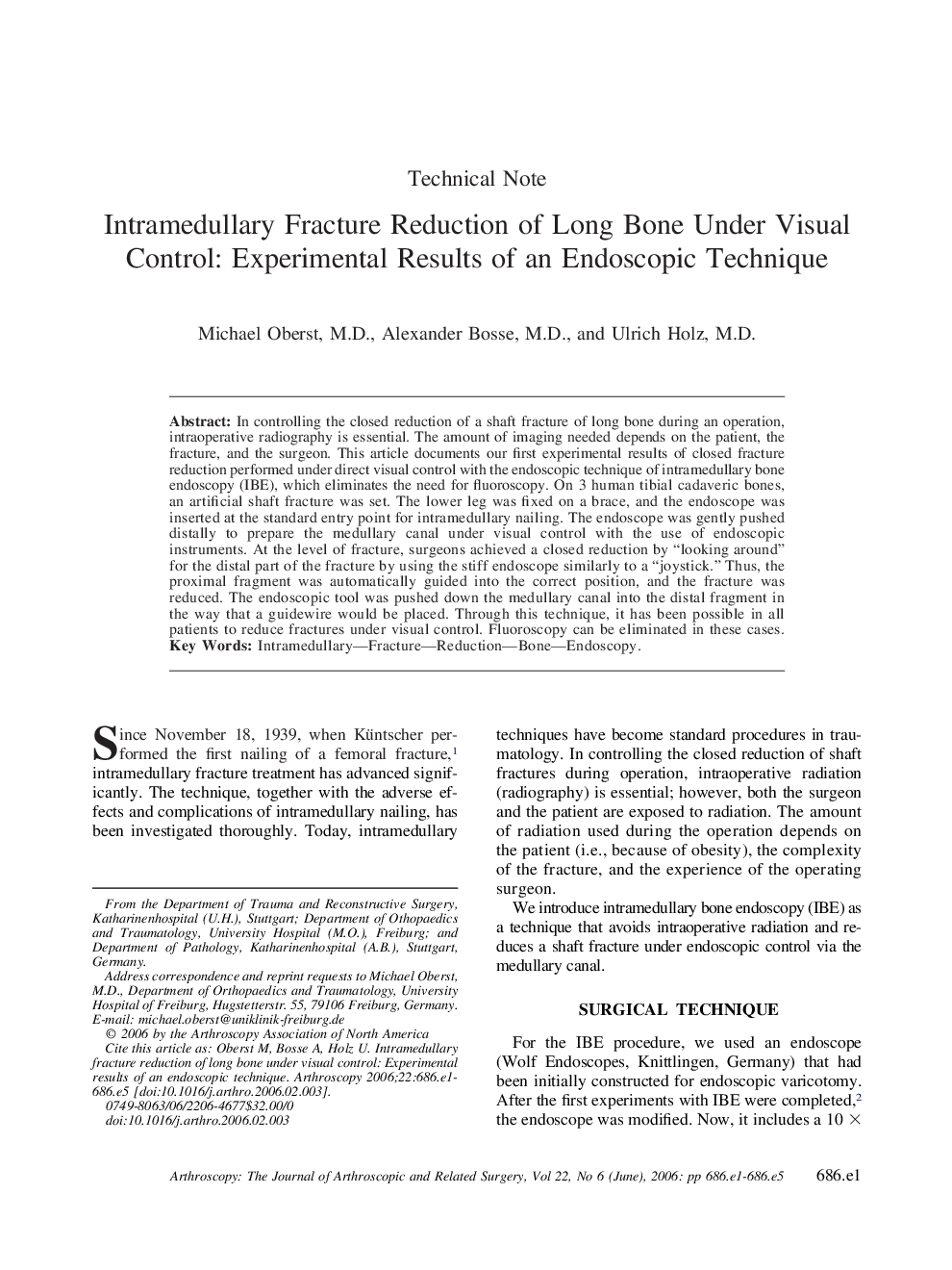| Article ID | Journal | Published Year | Pages | File Type |
|---|---|---|---|---|
| 4047761 | Arthroscopy: The Journal of Arthroscopic & Related Surgery | 2006 | 5 Pages |
Abstract
In controlling the closed reduction of a shaft fracture of long bone during an operation, intraoperative radiography is essential. The amount of imaging needed depends on the patient, the fracture, and the surgeon. This article documents our first experimental results of closed fracture reduction performed under direct visual control with the endoscopic technique of intramedullary bone endoscopy (IBE), which eliminates the need for fluoroscopy. On 3 human tibial cadaveric bones, an artificial shaft fracture was set. The lower leg was fixed on a brace, and the endoscope was inserted at the standard entry point for intramedullary nailing. The endoscope was gently pushed distally to prepare the medullary canal under visual control with the use of endoscopic instruments. At the level of fracture, surgeons achieved a closed reduction by “looking around” for the distal part of the fracture by using the stiff endoscope similarly to a “joystick.” Thus, the proximal fragment was automatically guided into the correct position, and the fracture was reduced. The endoscopic tool was pushed down the medullary canal into the distal fragment in the way that a guidewire would be placed. Through this technique, it has been possible in all patients to reduce fractures under visual control. Fluoroscopy can be eliminated in these cases.
Related Topics
Health Sciences
Medicine and Dentistry
Orthopedics, Sports Medicine and Rehabilitation
Authors
Michael M.D., Alexander M.D., Ulrich M.D.,
